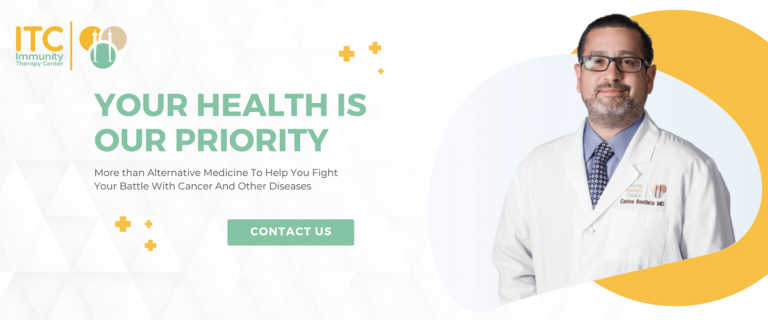Oxygen is easy to miss and take for granted. It is a colorless gas that exists all around us, making up about 21 percent of the Earth’s atmosphere. Oxygen is the third most abundant element in the world, and it is a necessary component of life.
Oxygen and cancer may not seem to have any real relationship, but they may be more connected than you think. Read on to learn more about oxygen therapy for cancer.
What is Oxygen Therapy?
Oxygen therapy is an umbrella term that refers to several forms of medical treatment that are designed to introduce into the body, specifically to flood tumors and cancer cells. It is well-known and studied that normal human cells need just the right amount of oxygen to survive and thrive. Mechanisms within the body regulate how much oxygen your cells get, which ensures that your cells adapt and get enough oxygen when you change altitudes or perform aerobic exercises.
The relationship between oxygen and cancer cells is complicated, but cancer cells are often starved of oxygen. Studies on human and mouse breast cancer cells suggest that tumor cells can actually use this to their advantage. When exposed to low oxygen levels, tumor cells had a higher chance of survival that also promoted thei
r ability to spread within the bloodstream.
Through oxygen therapy, doctors may be able to induce cell death and control or reduce tumor cell proliferation. Introducing oxygen to cancer cells may also increase their sensitivity to other forms of treatment, like chemotherapy and radiatio
n therapy.
Incorporating more oxygen into the body may also have other effects that promote healing. Benefits include:
- A decrease in inflammation and swelling
- The growth of new blood vessels
- Immune system support
- Improved rate of healing
Types of Oxygen Therapy for Cancer Treatment
There are several types of Oxygen therapy that range from oral medication to medication directly injected into the tumor to increase oxygen retrieval. Some forms of oxygen therapy you may encounter include:
Hyperbaric Oxygen Therapy
Also known as HBOT, This oxygen therapy includes staying inside a pressurized hyperbaric oxygen chamber and breathing in pure oxygen (O2). The hyperbaric oxygen treatment can help improve the results of cancer treatment and heal side effects like radiation necrosis caused by radiation therapy.
Supplemental Oxygen Therapy
People in the late stages of cancer can sometimes have low oxygen. Supplemental oxygen therapy can help alleviate that. Additionally, this treatment can increase the survival rate of the patient.
This can both be administered at the hospital or in the comforts of the home.
Ozone Therapy
What is ozone therapy? It is a type of oxygen treatment that uses the ozone (O3) to increase the amount of oxygen in the body which could help stop tumor growth. It is explicitly utilized for reducing cancer symptoms. Ozone is simply a compound comprising three oxygen atoms. Ozone therapy focuses on oxyge
nation by inserting ozone into your bloodstream. Ozone therapy itself comes in three different forms:
Ozone UVB
Ozone UVB therapy is a unique ozone therapy that combines the power of the sun with your own blood. Your blood is extracted and exposed to ultraviolet light, which is believed to oxygenate the blood via ozone (comprised of three oxygen atoms). The “oxygenated” blood is then reinjected back into your body, which may help to increase oxygen levels and slow down cancer growth.
Ozone Autohemotherapy
Similar to ozone UVB therapy, ozone autohemotherapy uses your own blood to support oxygenation. Your blood is extracted and injected directly with ozone before getting reintroduced back into your body.
Ozone Rectal Insufflation
Unlike HBOT treatments where you enter a pressurized chamber, with ozone rectal insufflation, a clinician injects ozone directly into the rectum. The walls of the rectum are extremely sensitive and porous. Theories suggest that the walls of the rectum can more readily absorb oxygen.
This may allow for greater efficiency and thus more significant results.
More research and trials are necessary to fully understand the potential effects and benefits of oxygen therapy for cancer. The current research is promising, and administered properly, oxygen therapy leaves room for a non-invasive cancer treatment.
Benefits of Oxygen Therapy
Oxygen therapy has a wide range of benefits over other forms of treatment. Oxygen is a natural substance that we all need to exist. While pure oxygen concentrations can be dangerous (those using oxygen tanks should be careful), oxygen breathed into the lungs is relatively safe. Ozone therapy is also considered mostly safe, and side effects are mainly nonexistent to minimal.
The most significant benefit of oxygen therapy is that it is minimally invasive. It does not require incisions, skin grafts, or anesthetic, so you will not have to deal with decompression sickness, wound care, recovery periods, or downtime. You can return to your everyday activities almost immediately.
Is Oxygen Therapy Right for You?
Oxygen therapy is safe and may be applied to various conditions of cancer. Some studies suggest oxygen therapy may relieve illnesses ranging from migraines to rheumatoid arthritis.
If you’d like to know more about oxygen therapy and are considering it a treatment for your or a loved one’s particular situation, we invite you to contact us today for your individual treatment options.
Sources:
- https://blog.dana-farber.org/insight/2019/11/cancer-and-oxygen-wh
best online pharmacy with fast delivery buy oseltamivir no prescription with the lowest prices today in the USA
ats-the-connection/
- https://www.sciencedaily.com/releases/2019/11/191107084045.htm
- https://www.ncbi.nlm.nih.gov/pmc/articles/PMC3312702/
- https://medlineplus.gov/oxygentherapy.html
- https://www.sciencedaily.com/releases/2019/11/191107084045.htm
- https://pubmed.ncbi.nlm.nih.gov/15257330/
- https://www.ncbi.nlm.nih.gov/pmc/articles/PMC6151231/
- https://www.hindawi.com/journals/omcl/2016/1908164/
- https://www.ncbi.nlm.nih.gov/pmc/articles/PMC3180186/
At Immunity Therapy Center, our goal is to provide objective, updated, and research-based information on all health-related topics. This article is based on scientific research and/or other scientific articles. All information has been fact-checked and reviewed by Dr. Carlos Bautista, a Board Certified Medical Doctor at Immunity Therapy Center. All information published on the site must undergo an extensive review process to ensure accuracy. This article contains trusted sources with all references hyperlinked for the reader's visibility.

